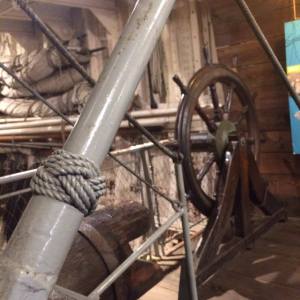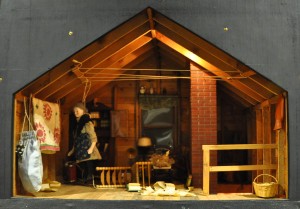The official motto of the United States Coast Guard is “Semper Paratus,” or “Always Ready.” But, since the heyday of the United States Life-Saving Service (which merged with the Revenue Cutter Service in 1915 to form our modern USCG), at least, another phrase has adorned the flipside of that figurative coin: “The rules say you have to go out, but they do not say you have to come back.”
On February 18, 1952, four young men with those words in mind set out from the Chatham (Massachusetts) Lifeboat Station in a 36-foot self-righting, self-bailing wooden motor lifeboat – clinically named CG36500 – into a hellish nor’easter, and the annals of lifesaving lore. In what has since been considered the greatest small-boat rescue in USCG history, Boatswain’s Mate First Class Bernie Webber and his crew of three – Andrew Fitzgerald, Richard Livesey, and Ervin Maske – battled at-times hurricane-force winds and frigid, 60-foot seas to rescue the crew of the S.S. Pendleton, a 500-foot World War II-era tanker which had broken in half several miles offshore.
En route, the CG36500’s engine briefly quit, and the angry seas smashed the boat’s windshield and tore away her compass. Yet, somehow, Webber and his crew successfully reached the stern of the mortally wounded Pendleton, and despite the odds, successfully rescued 32 of the ship’s crew in a boat designed to hold a maximum of 12 (including its own crew).
Not surprisingly, this seemingly impossible feat became the stuff of Coast Guard legend, yet Webber, Fitzgerald, Livesey, and Maske did not consider themselves “heroes”, per se; rather, they regarded their actions simply as a fulfillment of duty. By the late 1960s, the old 36-footers, including CG36500, had been decommissioned, and the slick, new 44-foot motor lifeboat became the Coast Guard’s standby.
The CG36500 languished in dry-dock, neglected, for more than a decade, until a collective of intrepid locals, recognizing her historical value, set about painstakingly restoring her. Today, the fully restored and operational CG36500 is maintained under the auspices of the Orleans Historical Society and Museum, which features an impressive exhibit on the famed rescue in its nearby museum. As the son of a career Coast Guardsman, having the opportunity to visit the boat was a borderline spiritual experience. The 2016 movie The Finest Hours – based on Michael J. Tougias and Casey Sherman’s 2009 book of the same name – faithfully recreates the Pendleton rescue. While the film was not a commercial success, in this era of hyperbolic action movies that inexorably seek inspiration through the spilling of blood, it is good to see the four lifesavers from Chatham Station – and, by proxy, all who have come before or since – finally get their due.
Orleans Historical Society and Museum
3 River Rd, Orleans, MA 02653
http://www.orleanshistoricalsociety.org/
orleanshs@verizon.net
call 508-240-1329
Hours:
Tuesdays and Wednesdays 9:00 – noon and 1:00 – 5:00 or by appointment
The boat moves seasonally, so please visit the website to check on its location.




























































